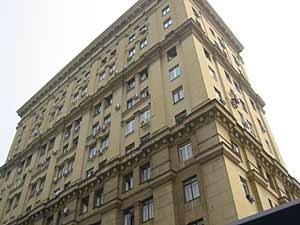
From Ukraine peace plans to Kazakh uranium—all that and more in our new nuclear digest
Our November Nuclear Digest by Bellona’s Environmental Transparency Center is out now. Here’s a quick taste of just three nuclear issues arising in U...
News

Publish date: February 23, 2018
News
Russia’s state nuclear corporation Rosatom unveiled plans this week to build up to 600 megawatts of wind energy in the Krasnodar region in southern Russia in what appears to be part of the company’s tentative diversification within renewable energy.
In various remarks over the past several months, the company has been at pains to say that its advances in the renewable sector don’t indicate the state monopoly is shrugging off nuclear power.
But the new wind farm and several battery production ventures the company is pursuing come as an evident bow to declining global demand for the nuclear power plant builds on which until recently the company had staked its future growth.
The new wind plant will be built by VetroOGK, a subsidiary of Rosatom, and will comprise a 150 megawatt park in the Shovgenovsky and Giaginsky districts of the southerly Republic of Adygea using equipment supplied by Dutch wind turbine maker Lagerwey, according to a Rosatom release. It expects to obtain construction permits for the project in March or April, while commissioning is scheduled for December 2018 or January 2019.
The VetroOGK had likewise inked a letter of intention to install another 200 megawatts of wind power in the Krasnodar Region at a wind park the company says it will open by the end of 2018. For the two parks Rosatom has invested $364 million, though its release also anticipates further funding for a 300 megawatt wind park in the Rostov Region, though the start date for that project remains unclear.
Though it would be a stretch to suggest that the wind projects could financially buoy the consolidated bulk of Russia’s monolithic nuclear monopoly, they nonetheless acknowledge sour facts about the company’s prospects for building its AES-2006, or VVER-1200, reactor package on the foreign market.
Speaking last summer at Novosibirsk’s Tekhnoprom-2017 technical trade conference, the company’s deputy director, Vyacheslav Pershukov said Rosatom’s international nuclear market was “exhausted” – the starkest acknowledgment yet from the company that its marquee product was selling poorly.
Addresing European audiences, company representatives have been less pessimistic in their remarks, and they have tried to finesse the company’s dabbling in the renewable sector as part of a carbon free green rebirth that embraces nuclear power as well.
Still, Andrey Rozhdestvin, Rosatom’s Western Europe director, acknowledged in November that the company’s investments in renewables are an effort to buttress its fortunes again the falling prices of wind and solar power.
For more than a decade, Rosatom has touted its VVER-1200 reactor packages to international capitols, vigorously signing up customers, many of whom would be hard pressed to afford it.
This state of affairs was put into bold relief in Turkey last month when an investment consortium fled Rosatom’s proposed Akkuyu nuclear power plant, taking with them 49 percent of the investment.
The project, which has been under discussion between Moscow and Ankara for nearly 18 years, has repeatedly been shelved as leery investors have steered clear of the returns they would get on Turkey’s energy market in light of a multibillion dollar investment.
But Rosatom’s bookkeepers nonetheless insist that the company has $130 billion in outstanding foreign business. This is accounted for almost exclusively by “memoranda of understanding’ and other handshake type deals that the company signs in developing economies.
These deals then become enormous loans the Rosatom offers on the back of the generous tax-payer backed state subsidies it receives. But with these subsidies expected to dry up in 2020, the pressure to put more deals on the books translated into yet more honor system commitments.
Indeed most of the counties Rosatom counts among its potential contracts – like Jordan, Algeria, Nigeria and Bolivia, and most recently Uganda and Ethiopia – won’t have infrastructure to support nuclear power for decades.
In other cases, like Hungary, the Rosatom-built Paks-2 plant has been controversially approved by EU regulators – a deal which will leave Budapest’s right wing-government heavily indebted to Moscow for the $10 billion plant.
Another similar deal would have indentured South Africa to Rosatom for $76 billion, but that country’s high court torpedoed the deal before it got off the ground.
Other countries where Rosatom builds are already underway – like India’s Kudankulam, Iran’s Bushehr, China’s Tianwan and Belarus’s Ostrovets – have been beset by Rosatom’s cost overruns and delays.

Our November Nuclear Digest by Bellona’s Environmental Transparency Center is out now. Here’s a quick taste of just three nuclear issues arising in U...

For three years now, Bellona has continued its work in exile from Vilnius, sustaining and expanding its analysis despite war, repression, and the collapse of international cooperation with Russia in the environmental and nuclear fields

The Board of the Bellona Foundation has appointed former Minister of Climate and the Environment Sveinung Rotevatn as Managing Director of Bellona No...

Økokrim, Norway’s authority for investigating and prosecuting economic and environmental crime, has imposed a record fine on Equinor following a comp...